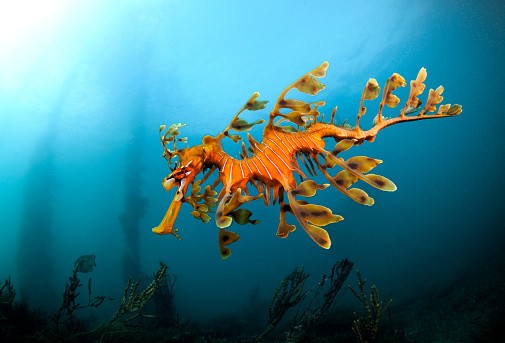There is a lack of information about many species, which can be concerning as it makes it difficult to assess their well-being. The International Union for Conservation of Nature's red list includes many plants and animals labeled as "data deficient," meaning that there is not enough information available about these species to determine if they are at risk of extinction. However, even with the limited knowledge that is currently available, it seems that the situation may not be positive.
According to Francesca Verones, a professor at the Norwegian University of Science and Technology's Industrial Ecology Program, species that are poorly understood but for which their geographic distribution is known are more likely to be at risk of extinction compared to species that are better understood. Over half of these lesser-known species may be in danger of disappearing. Additionally, there are even more species that are not well recognized at all, and it is not known if these species are in danger or not.

'Data Deficient' Species
The IPBES, a group of international experts in biodiversity, estimates that at least one million species on Earth are at risk of extinction. The IUCN has assessed around 147,000 species, and 41,000 (2%) are threatened. There is a discrepancy between these numbers because many species have not yet been discovered. It is estimated that there are around 10 million species on the planet, but we have only identified a small percentage of them, around 20%. Some species may have gone extinct without us ever being aware of their existence.
To properly protect and preserve life on Earth, it is important to understand the different organisms that inhabit the planet thoroughly. However, there is still much that we do not know, including about species that have already been identified. The threats and trends facing different species are constantly changing, and there are not enough researchers and resources available to adequately survey and monitor all species. Technology can help to facilitate this process, but it is also important to increase funding and support for research and conservation efforts.
According to Jan Borgelt, a postdoctoral fellow at the Norwegian University of Science and Technology's Department of Energy and Process Engineering, machine learning was used to calculate the risk of extinction for 7699 lesser-known species. The IUCN lists 20,469 species as "data deficient," Statistical tools and computers can be used to estimate the probability of certain outcomes and help fill in some of these knowledge gaps.

Conservation Efforts
The probabilities generated by the computer models were compared to the assessments made by researchers who analyzed the data manually. The computer models were found to be highly accurate. Borgelt emphasized that the intention of the models is not to replace the work of researchers but rather to provide a preliminary estimate of the risk of extinction for species where there is not yet enough data available. This can help researchers save time and effort, especially when resources are limited. However, the findings of the study are not necessarily positive.
According to Borgelt, as many as 85% of the poorly understood amphibian species may be at risk of extinction, while for other groups, such as mammals and reptiles, this figure is around 50%. This suggests that species that are not well known often face significant challenges. However, the new information can be used to help protect and preserve these species, for example, by identifying areas that are particularly important for biodiversity and requiring additional protective measures.
The results of the study may also be useful for organizations like the IUCN in their assessments and conservation efforts. Verones notes that the probability of extinction for different species and regions can vary significantly, which suggests that some research based on risk assessments may not always be accurate. It is important to carefully consider the data and methods used in such assessments to ensure they are reliable and accurate.

ALSO READ: About 25% of Marine Mammals Getting Extinct, More Still At Risk [Study]
IUCN Red List Quantifiers
Following Britannica's report, the IUCN Red List of Threatened Species is a widely recognized system for categorizing the conservation status of plants, animals, and other organisms at risk of extinction. Developed by the International Union for Conservation of Nature (IUCN) in 1994, the Red List provides a standardized system for evaluating the extinction risk of different species based on specific criteria and categories. The IUCN Red List uses five quantitative criteria to assess the likelihood of extinction for a particular species and assigns each species to a category based on its level of risk. The categories range from "Least Concern" to "Extinct," with several intermediate categories in between. The Red List is updated periodically to reflect changes in the conservation status of species.
The IUCN Red List criteria are used to evaluate the extinction risk of a particular species based on several factors, including:
The rate of population decline refers to the rate at which the population of a species decreases over time.
Geographic range: The size of the area where a species is found can be an indicator of its extinction risk, with species that have a smaller range being at greater risk.
Small population size: A species with a small population size is more vulnerable to extinction, as it may have fewer individuals to reproduce and maintain the population.
Restricted area of occupancy: Species found in a very small or restricted area may be at greater risk of extinction due to their limited ability to adapt to environmental changes.
Probability of extinction based on quantitative analysis: This refers to the results of a statistical analysis that estimates the likelihood of extinction for a given species.
After a species has been evaluated using these criteria, it is assigned to one of several categories based on its level of risk. The categories range from "Least Concern" to "Extinct," with three categories (CR, EN, and VU) being considered "threatened" species.

IUCN Data Significance
The IUCN Red List categories are based on the rate of population decline for a given species, with more severe declines resulting in higher risk categories. For example, a species experiencing a 90% decline over ten years (or three generations) would be classified as critically endangered, while a species experiencing a 50% decline over the same time frame would be classified as endangered, and one experiencing a 30% decline would be considered vulnerable. It is important to note that a species cannot be classified based on a single criterion, and all five criteria must be considered when determining its status.
The IUCN Red List is updated annually based on assessments made by thousands of scientists worldwide, and governments and conservation organizations use the information it provides to prioritize their efforts to protect at-risk species. The IUCN Red List serves as a critical tool for understanding the decline of biodiversity on Earth and the impact of human activities on the planet.
It provides a widely accepted standard for measuring the conservation status of species over time and has been used to assess the status of nearly 96,500 species as of 2019. Of these, more than 26,500 species of plants, animals, and others are classified as threatened (CR, EN, and VU). The IUCN Red List is available online and is used by scientists to analyze trends in the percentage of species in different categories and the threats and conservation measures contributing to these trends. The information provided by the Red List helps to highlight the need for continued efforts to protect and conserve at-risk species.
RELATED ARTICLE : More Than 4,300 Reptiles From Australia, Amazon, and Madagascar At Risk of Extinction
Check out more news and information on Endangered Species in Science Times.











